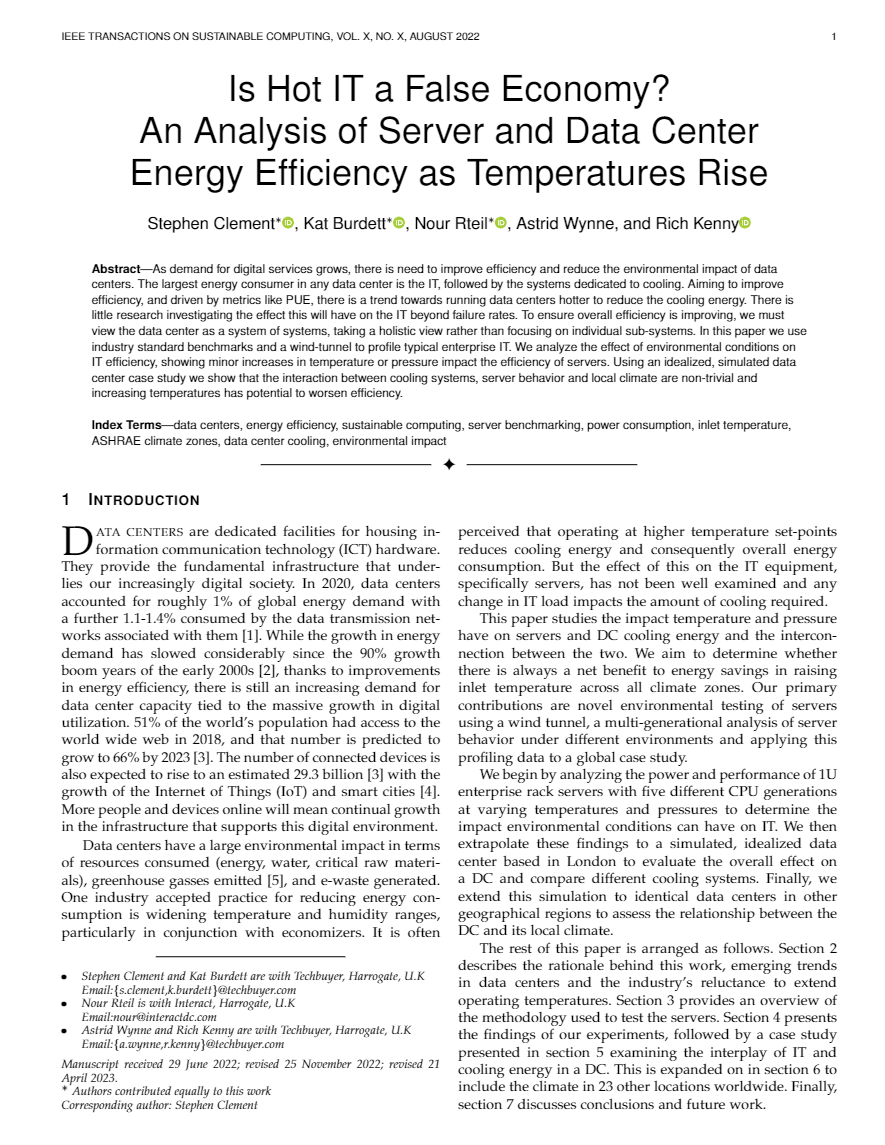Interact publishes in IEEE Journal of Sustainable Computing
Rich Kenny | Nov. 24, 2023

Interact publishes in IEEE Journal of Sustainable Computing – Impact of temperature on data centre and server efficiency and performance.
The IEEE Journal of Sustainable Computing is in the top 5% of all academic journals published worldwide. We have published in this Journal before back in 2020 and our previous work on the slowdown of Moore’s Law had a big impact on the data centre sector.
What we did:
The research focused on why we need to shift the current data centre design paradigm. Right now the focus in on constructing a building for IT without considering fundamental key variables – namely the IT itself and the Location.
Currently people decide on the building, then choose the cooling, then the hardware – this isn’t a sensible way to approach efficiency and effective service delivery.
We need to look at everything as a system of systems, not just a single item at a time.
Our approach
We looked cross generationally on servers and CPUs and then looked at the environmental impact. Those finding were then placed in an idealised DC to evaluate overall effect and impact on cooling. We then extended the simulation to other geographic regions.
Location first as opposed to building first – as location determines the tolerance and impact on the cooling – and the reaction from the hardware.
The aim of our research was to find if there was always a net benefit to energy and carbon savings in raising temperature in the data centre.
The results
Blanket statements about raising temperatures to improve data centre efficiency from colocation providers aren’t right – factors that will impact the ability and benefit of doing so need to be considered. We look at the impact of bringing practical solutions on how to run compute better and look at designing out waste.
The order of understanding should be: Location > Hardware > Cooling > Temperature
For servers:
Different hardware has different tolerances and the location will impact the hardware choices.
Earlier models are worse effected. We also need to account for raised temperatures not just being about cooling and fan speed but leakage current increasing with temperature raises.
Understand that as temperature rises at the inlet efficiency decreases – this decrease is not just fan based so cant be solved with pressurisation alone.
Understand the trade-off being made – temperatures below 30 degrees at inlet have no impact on total performance – just on efficiency.
Utilisation is also key as the two ends – idle and max have the highest impacts
For blanket decisions on temperature rising:
It depends on multiple factors – sometime the benefit to increased temperature will be offset by additional decrease in energy efficiency – to understand the impact need to look at the hardware and location first.
Read the paper on the link below:
https://www.researchgate.net/publication/375860733_Is_Hot_IT_a_False_Economy_An_Analysis_of_Server_and_Data_Center_Energy_Efficiency_as_Temperatures_Rise
